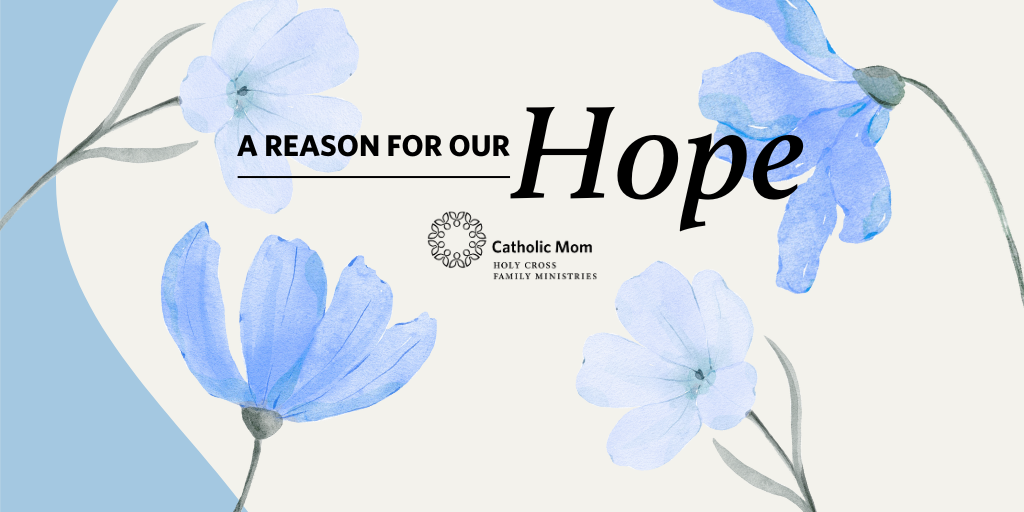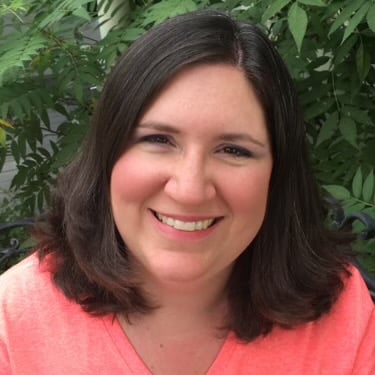
Unexpected life circumstances test Kathryn Pasker Ineck’s understanding of hope.
For the Jubilee of Hope, our writers reflect on prayer as a source of hope in their lives.
When Pope Francis declared this to be the Jubilee Year of Hope, I was struck by the different connotations the word has. In our family, “Hope” is my beautiful niece, full of determination and confidence and grace and love. We often “hope” for a good grade, an athletic win, a part in a play.
The theological virtue of hope, though, is more nuanced. The Catechism of the Catholic Church defines hope as our “desire [for] the kingdom of heaven and eternal life as our happiness, placing our trust in Christ’s promises and relying not on our own strength, but on the help of the grace of the Holy Spirit” (Section 1817).
When I think about my own journey toward true hope, I go back to college and the first time I noticed my husband’s seizure activity.
We were on our way to study at a local greasy diner, and as I chattered away at him about everything and nothing, his right arm flew up over his head and then his hand rested back on the steering wheel.
Weird.
“Are you okay?” I asked.
“What?” he deadpanned. “Oh. I’m just twitchy.”
No big deal.
Just twitchy.
In chemistry class, the professors always put him at his own lab table so he wouldn’t inadvertently knock other students’ work to the floor. In other pharmacy classes, too, his professors and classmates all just knew he was twitchy and made accommodations without thinking anything of it.
We all did.
No big deal.
Just twitchy.
Until it was a big deal.
He was still … just twitchy.
We were soon married—a definite declaration of hope!—and I graduated from college and worked as a proofreader and library assistant while he finished up his doctorate in pharmacy and started his two-decade career as a hospital pharmacist. We bought a home. We mourned three miscarriages, then celebrated two babies, thirteen months apart. We bought a different home and remodeled it. We added two more babies. I stayed home with the kids and he worked around the clock. Our hopes and dreams for a family and a comfortable life were all realized.
And Jim was was still … just twitchy.
But as the years went on and the kids grew and the hours worked and the home responsibilities compounded, he was more than just twitchy.
He was seizing.
Giant tonic-clonic seizures once or twice a month for three long years before I could get the attention of his primary care provider. Five days of incapacitation after each seizure. Fear of when they would strike again. Marking the calendar. One cluster of seizures this month, two next month. None for eighteen months. Five a week for three months.
We finally got him an appointment with an epileptologist and received a diagnosis: juvenile myoclonic epilepsy. It progresses from absence seizures in childhood, to myoclonus (read: twitchiness) after adolescence, then tonic-clonic seizures around mid-to-late thirties, and finally to generalized seizures thereafter.
We decided to hope.
The epileptologist assured us that there was every reason to believe that we could get the right cocktail of anti-seizure medications and get Jim back to normal. But we were fearful. What if Jim lost his job? What if I had to go to work? Who would take care of Jim? Who would take care of the kids? The unknowns were crushing. Our hope for a return to health was rocky.
But then.
Jim and I decided to pray in thanksgiving for all the blessings we will have received as a result of this overwhelming crisis.
We decided to hope.
The problem was that we didn’t really know what the end-result was that we hoped for.
A return to a breakneck schedule and sixty-hour workweeks? A return to more promotions and more stress? A return to missing Christmases and Easters, missing family Sunday Masses and recitals? Is that what we really wanted?
Redefining Hope
In the middle of all this, Jim was ordained as a permanent deacon. During his formation, we learned that it is incredibly difficult to pray — especially for ourselves — when we are suffering. We set our goal to pray for others, knowing that we could rest in the arms of our family members and friends praying for us.
Hope bloomed.
Jim spent countless hours lying in bed, praying. Praying the Divine Office. The Rosary. The Litany of Humility. Of Surrender. Of Trust. Listening to books by leading theologians on prayer, then praying with the kids. He talks with Jesus all day long. He sleeps with a rosary wrapped around his wrist, holding Our Lady’s hand.
Here’s the thing. Jim’s epilepsy feels all-consuming, like an identity. But how much different is this cross than anyone else’s? No one is immune to suffering. No one is immune to pain, to loss, to frustration.
Hope is our unifier.
Hope is our beacon, guiding us toward heaven, and in the process, guiding us toward each other.

I know for certain that our marriage is more solid, more perfected than it was before Jim’s seizures changed the course of his career and our home life. Our children are more patient, more aware of the other people around them. Our family members and friends have shown us what it is to pray unceasingly for each other and how that has dramatically changed their own prayer lives in the process.
Hope changed us—is changing us—as a community with a common goal: the kingdom of heaven.
Share your thoughts with the Catholic Mom community! You'll find the comment box below the author's bio and list of recommended articles.
Copyright 2025 Kathryn Pasker Ineck
Images: Holy Cross Family Ministries
About the Author

Kathryn Pasker Ineck
Married for more than two decades to her best friend, and mom of four teens, Kathryn finds that life is never boring. She pursues the heart of God--led by His gentle Mother--and relies on the Divine Mercy Chaplet, a desire for chocolate, and an insatiable thirst for reading into the wee hours of the morning. She writes to maintain her sanity at Kathryn Pasker Ineck.



.png?width=1806&height=731&name=CatholicMom_hcfm_logo1_pos_871c_2728c%20(002).png)
Comments